Effect of pH on Copper Flotation Recovery VS Mass Pull
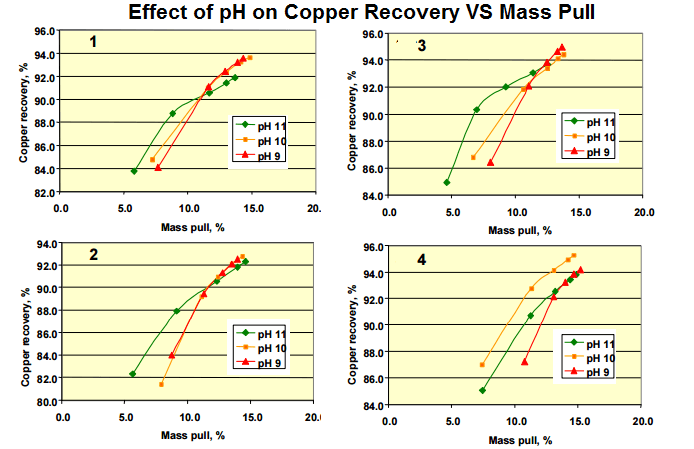
An example of testing the effect of pH on rougher flotation on pit samples and the results are presented. Since this is only an example, it needs reminding that not all ores will respond the same. Here, rougher flotation is most Selective at a pH of 9.5 as pH levels in the 9 to 10 […]
Effect of Primary Grind Size on Copper Flotation Rougher Grade and Recovery
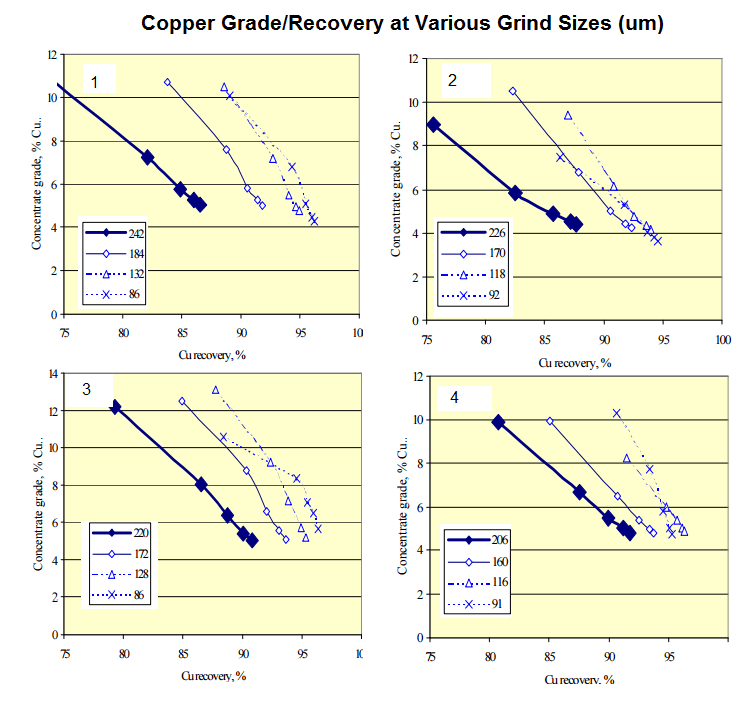
An example of a copper metallurgy study where the effect of primary grind on rougher flotation each of the GeoMetallurgical samples was investigated. A simple economic study was conducted on these copper flotation results, using typical power costs and a net smelter revenue value for copper of 90 cents. This indicated that the optimum grind was […]
Sample Preparation Flowchart
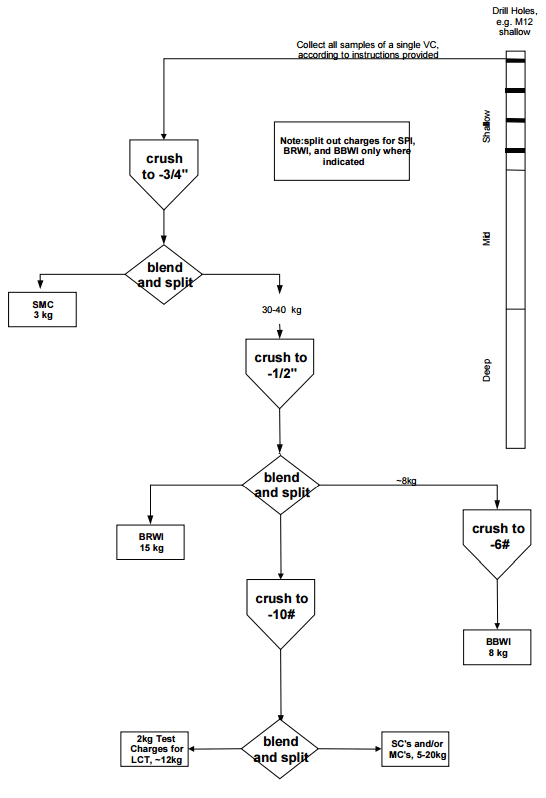
The samples set aside for the Super Composites (SC) were blended to form the four composites used for the initial flowsheet development program. Each SC was crushed to 100% passing 10 mesh and rotary split into 2 kg charges and a reject fraction. A flowchart summarizing the sample preparation procedure is presented here below. Eighteen […]
Copper Lead Zinc Metallurgy
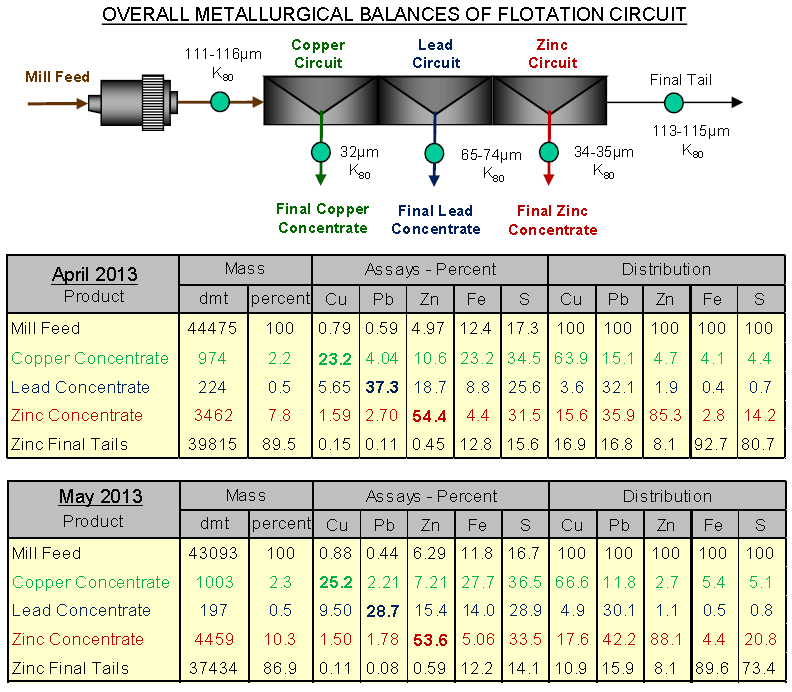
Monthly composites of mill feed, copper concentrate, lead concentrate, zinc concentrate and final tailing were sent for detailed mineralogical/metallurgical analysis. These samples were analyzed and also compared to previous similar work done. The samples represented the following flowsheet and monthly balance: Mineral Speciation: Although Chalcopyrite is still the main form of copper in all samples; […]
Flotation pH vs Collector Concentration Pyrite/Galena/Chalcopyrite
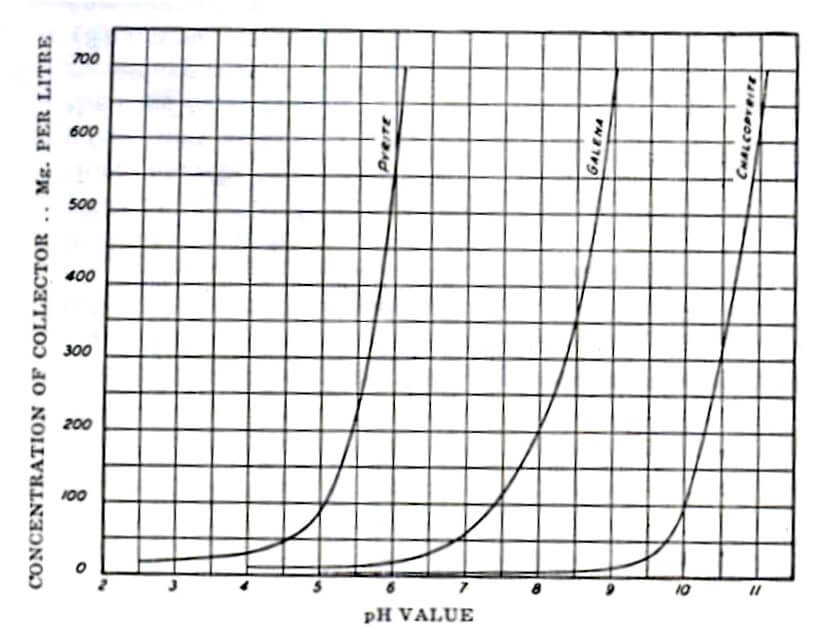
Arsenic in Copper Concentrate
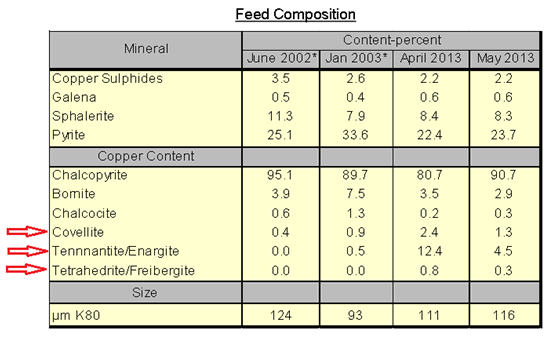
In a certain case study of “high” Arsenic in Copper Concentrate (almost 0.5% As) produced by flotation, and where the Cu Conc is mostly chalcopyrite and therefore the main form of copper; the content of secondary copper minerals was variable. Tennantite/Enargite/Freibergite, a copper-arsenic sulphide mineral, as well as covellite, was present in significantly higher amounts today. […]
Effect of Pre-Aeration & Oxygen on Sodium Cyanide Consumption Gold Recovery
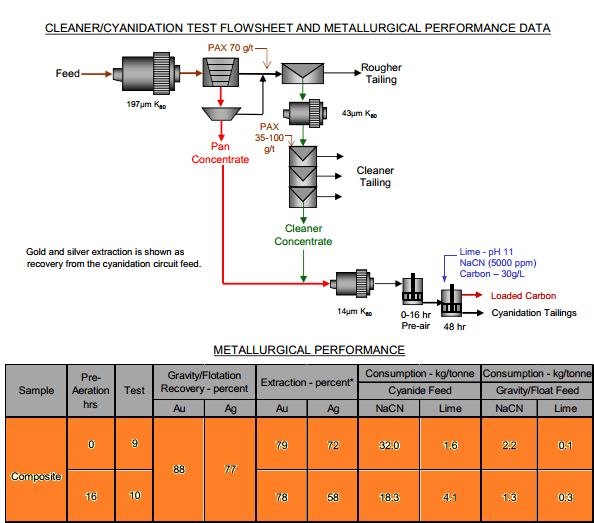
In your process development you may sometime want to test and see what effect (for your particular ore sample) would the use of oxygenation and pre-aeration have on silver and gold kinetics leach rates and recoveries. Some situations show improved precious metal recoveries, others show an impact of the leach agent’s consumption rate. Here, a […]
Effect of Regrind “Finer Grind” Gold Recovery
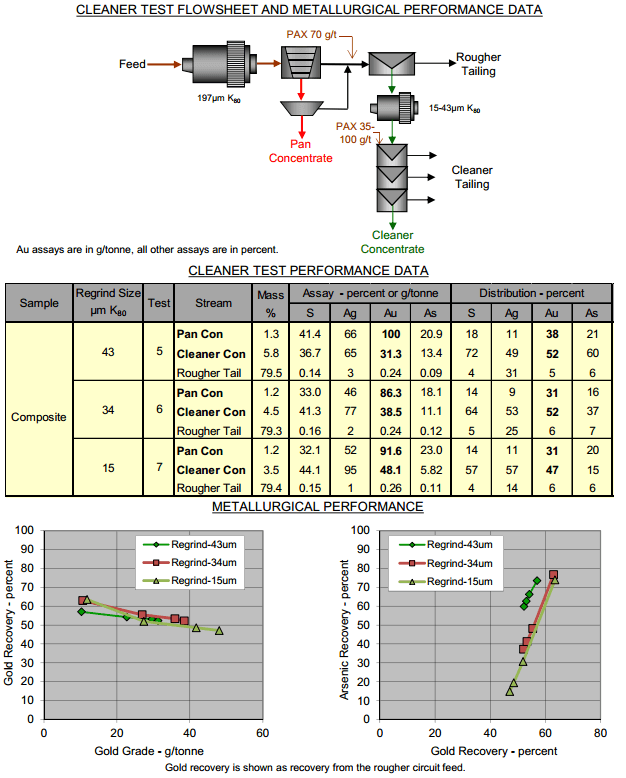
Regrinding a flotation concentrate (commonly the rougher or scavenger conc) can often produce gains in final concentrate grades and overall metal recoveries. What is also possible and not unfrequent that all you get is a better concentrate grade. If the valuable metal (in this case Au) is locked with other easy to float sulfides and were […]
Selective Flotation
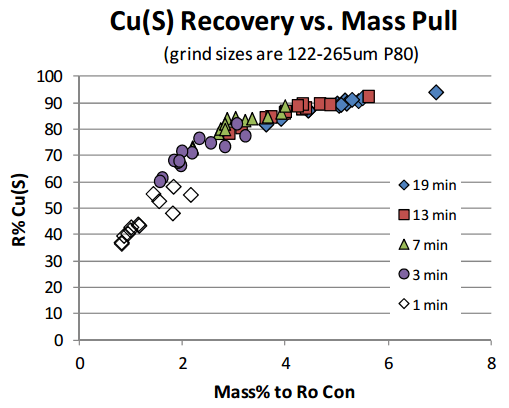
Who would think that Selective Flotation of copper, gold, zinc or any metal would required that one must be able to feel pain and recognized and/or admit when it hurts. Flotation mass-pull is a process that is often misunderstood; a learner’s mistake made by non-operating types. You do not need to pump anything in the […]
Effect of Clay on Flotation Recovery

Here is a classic relationship displaying how clays can affect/impact flotation recovery, copper rougher-scavenger recovery in the case.
